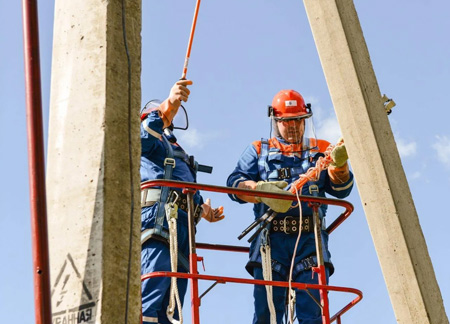
-
 Afrikaans
Afrikaans -
 Albanian
Albanian -
 Amharic
Amharic -
 Arabic
Arabic -
 Armenian
Armenian -
 Azerbaijani
Azerbaijani -
 Basque
Basque -
 Belarusian
Belarusian -
 Bengali
Bengali -
 Bosnian
Bosnian -
 Bulgarian
Bulgarian -
 Catalan
Catalan -
 Cebuano
Cebuano -
 Corsican
Corsican -
 Croatian
Croatian -
 Czech
Czech -
 Danish
Danish -
 Dutch
Dutch -
 English
English -
 Esperanto
Esperanto -
 Estonian
Estonian -
 Finnish
Finnish -
 French
French -
 Frisian
Frisian -
 Galician
Galician -
 Georgian
Georgian -
 German
German -
 Greek
Greek -
 Gujarati
Gujarati -
 Haitian Creole
Haitian Creole -
 hausa
hausa -
 hawaiian
hawaiian -
 Hebrew
Hebrew -
 Hindi
Hindi -
 Miao
Miao -
 Hungarian
Hungarian -
 Icelandic
Icelandic -
 igbo
igbo -
 Indonesian
Indonesian -
 irish
irish -
 Italian
Italian -
 Japanese
Japanese -
 Javanese
Javanese -
 Kannada
Kannada -
 kazakh
kazakh -
 Khmer
Khmer -
 Rwandese
Rwandese -
 Korean
Korean -
 Kurdish
Kurdish -
 Kyrgyz
Kyrgyz -
 Lao
Lao -
 Latin
Latin -
 Latvian
Latvian -
 Lithuanian
Lithuanian -
 Luxembourgish
Luxembourgish -
 Macedonian
Macedonian -
 Malgashi
Malgashi -
 Malay
Malay -
 Malayalam
Malayalam -
 Maltese
Maltese -
 Maori
Maori -
 Marathi
Marathi -
 Mongolian
Mongolian -
 Myanmar
Myanmar -
 Nepali
Nepali -
 Norwegian
Norwegian -
 Norwegian
Norwegian -
 Occitan
Occitan -
 Pashto
Pashto -
 Persian
Persian -
 Polish
Polish -
 Portuguese
Portuguese -
 Punjabi
Punjabi -
 Romanian
Romanian -
 Russian
Russian -
 Samoan
Samoan -
 Scottish Gaelic
Scottish Gaelic -
 Serbian
Serbian -
 Sesotho
Sesotho -
 Shona
Shona -
 Sindhi
Sindhi -
 Sinhala
Sinhala -
 Slovak
Slovak -
 Slovenian
Slovenian -
 Somali
Somali -
 Spanish
Spanish -
 Sundanese
Sundanese -
 Swahili
Swahili -
 Swedish
Swedish -
 Tagalog
Tagalog -
 Tajik
Tajik -
 Tamil
Tamil -
 Tatar
Tatar -
 Telugu
Telugu -
 Thai
Thai -
 Turkish
Turkish -
 Turkmen
Turkmen -
 Ukrainian
Ukrainian -
 Urdu
Urdu -
 Uighur
Uighur -
 Uzbek
Uzbek -
 Vietnamese
Vietnamese -
 Welsh
Welsh -
 Bantu
Bantu -
 Yiddish
Yiddish -
 Yoruba
Yoruba -
 Zulu
Zulu


Νοέ . 03, 2024 08:40 Back to list
cable tie removal
The Art of Cable Tie Removal A Simple Guide
Cable ties, also known as zip ties, are ubiquitous in our lives. We encounter them in settings ranging from homes and offices to construction sites and industrial facilities. Their primary purpose is to organize and bundle cables, wires, and other materials, providing a neat and efficient way to manage clutter. However, there comes a time when these handy tools must be removed for various reasons—be it upgrading equipment, reorganizing wiring, or simply decluttering. In this article, we will explore effective techniques for cable tie removal, ensuring you can easily and safely accomplish this task.
Understanding the Basics
Before delving into the methods of cable tie removal, it's essential first to understand the different types of cable ties available. The most common are the standard nylon cable ties, which are designed for single-use. Once tightened, these nylon ties create a secure grip that is challenging to undo without the proper approach. Conversely, there are reusable cable ties that feature a mechanism allowing for multiple uses, making them easier to remove and adjust.
Tools You May Need
While some cable ties can be removed with just your hands, having the right tools can make the process much more efficient and safe
. Here are some items you might find useful1. Scissors or Wire Cutters These are essential for cutting through standard nylon cable ties. 2. Flathead Screwdriver This can be used to push the ratcheting mechanism, allowing you to release reusable ties. 3. Needle-Nose Pliers These can help grip and manipulate the ties for removal without damaging surrounding materials.
cable tie removal

Step-by-Step Guide to Cable Tie Removal
1. Assess the Situation Before removing a cable tie, take a moment to understand its positioning and the surrounding materials. This will help you avoid damaging any wires or equipment.
2. For Standard Cable Ties - Cutting If the tie is not reusable, use scissors or wire cutters to snip the tie close to the head, ensuring you don’t accidentally cut other wires. Always be cautious of sharp edges while making your cut. - Check for Fraying After cutting, inspect the area for any frayed cables that may have been inadvertently damaged during removal.
3. For Reusable Cable Ties - Use a Flathead Screwdriver Insert the screwdriver into the small hole next to the locking mechanism. Gently push down to release the ratchet, allowing you to pull the tie free without cutting it. - Careful Pulling Ensure you pull the cable tie straight out to avoid any unnecessary strain on the wires.
4. Cleanup After removal, tidy up the area, ensuring that any leftover pieces of the cable ties are properly disposed of, preventing any future hazards.
Conclusion
Removing cable ties doesn’t have to be a daunting task. With the right knowledge and tools, you can effectively manage your wiring and organize your space. Whether you’re upgrading your tech setup or simply tidying up, being equipped with the know-how for cable tie removal will save you time and effort. Always prioritize safety, and when in doubt, consult with a professional for assistance. By mastering this simple skill, you’ll be better prepared to tackle the organizational challenges that arise in both personal and professional settings.
Latest news
What Are Construction Tools and How Are They Used?
NewsJul.11,2025
Professional-Grade Duct Rodding Tools for Superior Cable Installation
NewsJul.11,2025
Enhancing Safety and Efficiency with Modern Hot Stick Solutions
NewsJul.11,2025
Empowering Cable Installation with Advanced Rodder Solutions
NewsJul.11,2025
Elevate Your Cable Installation Projects with Cable Pulling Tools
NewsJul.11,2025
Efficient Cable Handling Solutions: Cable Rollers for Sale
NewsJul.11,2025











